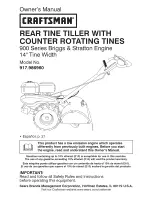
M02
J40
M6-
04
WDAT-3
2.160-3.660
- R O U T I N E M AI N T E N AN C E -
55
97/23 CE PED DIRECTIVE
97/23 CE PED DIRECTIVE gives instructions for installers, users and maintenance technicians as well. Refer to local
actuation norms.
In Italy, refer to the Ministerial Decree of 1
st
December 2004 no. 329 (and following modifications), which defines the
performances to be executed; the units of
1
st
category and those defined by the art. 3.3 97/23/EC are not included in this
regulation (see the serial number plate on the unit).
Briefly and as an example, see the following:
1. COMPULSORY VERIFICATION OF THE FIRST INSTALLATION only for units assembled on the installer’s
building site (for ex. Condensing c direct expansion unit)
2. CERTIFICATION OF SETTING IN SERVICE for all the units
3. PERIODICAL VERIFICATIONS to be executed with the frequency indicated by the Manufacturer (see the
MAINTENANCE INSPECTIONS paragraph)
PUT AT REST
If a long period of inactivity is foreseen, for example the winter for the cooling unit, the following is recommended:
•
to turn the power off in order to avoid electrical risks or damages by lightning strike
•
to avoid the risk of frosts as shown in the HYDRAULIC CONNECTIONS section, and, in particular
o
to power antifreeze resistances if present
If the period of inactivity is particularly long or in the event of extremely low temperatures, the external fans can be
blocked temporarily; therefore, it is recommended to switch them on every month in order to avoid seizures or electrical
overloads when the unit will be switched on.
Even pumps can be subjected to motor shaft blocks; therefore, unblock them by using a screwdriver on the discharge
hole.
The restarting of the unit has to be carried out by qualified personnel, in particular, after the winter break for cooling units
or when seasonal switching should be performed.
When restarting, refer to the SWITCHING ON section.
Schedule technical assistance in advance to avoid hitches and be able to use the installation when necessary.
REFRIGERANT TABLES
THIS SECTION IS DEVOTED ONLY TO QUALIFIED TECHNICIANS THAT KNOW THE FOLLOWING:
•
THE OPERATIONAL PRINCIPLES OF THE REFRIGERATING CIRCUIT OPERATION
•
THE MODES OF DETECTING TEMPERATURE AND PRESSURE
•
THE RISKS RELEVANT TO THESE OPERATIONS
The data of the tables allow the testing of the refrigerating circuit operation by the detection of a few objective
parameters:
•
Condensing
pressure
•
Liquid
temperature
•
Inlet
pressure
•
Inlet
temperature
The data are significant if they are detected simultaneously and while the refrigerating circuit is running.
OVERHEATING
= inlet temperature – Saturation temperature
R-22 R-407C
R-410A
Inlet pressure
3.8 bar
3.8 bar
7.2 bar
Inlet temperature
7.3°C
7.3°C
7.3°C
Overheating
7.3 – ( - 1.13 ) =
8.43
°C
7.3 – 1.18 =
6.12
°C
for calculation consider the
Td (dew point
)
7.3 – 0.8 =
6.5
°C
SUBCOOLING
= condensing temperature (pressure *) – liquid temperature
R-22 R-407C
R-410A
Condensing pressure
18.6 bar
18.6 bar
29.6 bar
Liquid temp.
42.9°C
42.9°C
45°C
subcooling
50.39 – 42.9 =
7.49
°C
44.74 – 42.9 =
1.84
°C
for calculation consider the
Tb (bubble point)
49.91 – 45 =
4.91
°C
* It is important that the condensation pressure is detected as close as possible to the point where the liquid temperature
is detected, in the event that the calculation will be effected by the losses of charge (and, therefore, of temperature)
caused by the refrigerating circuit components placed between the two measurement points.
For R410A the glide was not considered, since it is close to 0.
The values in the tables refer to a specific refrigerant supplier; slight differences are possible with other suppliers.
Pg
= P gauge = relevant pressure (read on the pressure gauge)
Td
= dew point temperature
Ts
= saturation pressure
Tb
= bubble point temperature
Summary of Contents for WDAT-3 2.160
Page 2: ......






































